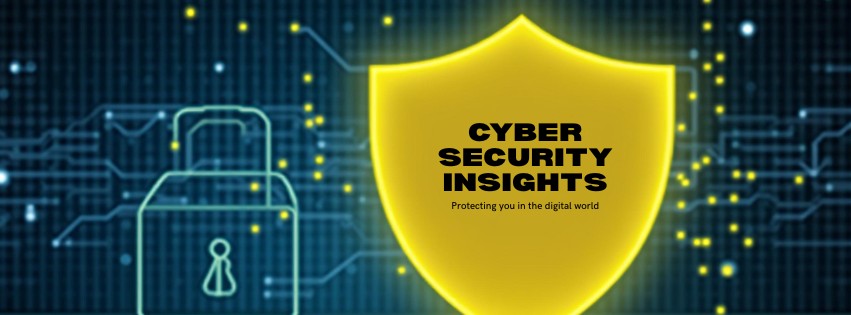
Critical Linux Kernel’ Double Free Vulnerability Let Attackers Escalate Privileges
Critical Linux Kernel Double-Free Vulnerability: A Deep Dive into CVE-2023-37706
In the ever-evolving landscape of cybersecurity, vulnerabilities in core operating system components like the Linux Kernel are of paramount concern. Recently, a critical double-free vulnerability, tracked as CVE-2023-37706, has come to light, allowing attackers to escalate privileges and potentially gain full control over affected systems. This blog post will delve into the specifics of this vulnerability, its potential impact, and crucial remediation strategies.
Outline
- Understanding Double-Free Vulnerabilities
- CVE-2023-37706: The Linux Kernel Double-Free
- Why This Vulnerability is Critical
- Impact and Exploitation Scenarios
- Remediation Actions: Securing Your Linux Systems
- Recommended Tools for Vulnerability Management and System Hardening
- Key Takeaways for System Administrators and Security Professionals
Summarising the Core Concepts
This article explores CVE-2023-37706, a critical double-free vulnerability in the Linux Kernel. We begin by clarifying what a double-free vulnerability entails—a severe memory corruption flaw where a program attempts to free the same block of memory twice, leading to unpredictable behavior, including arbitrary code execution. CVE-2023-37706 specifically impacts the Linux Kernel, enabling local privilege escalation. Its criticality stems from the deep-seated nature of the vulnerability within the kernel, providing a gateway for attackers to gain root privileges, bypassing system security mechanisms. The practical implications are dire: an attacker with limited access could transform into an administrator, compromising data integrity, confidentiality, and system availability. Mitigation strategies are crucial and center around immediate kernel updates, diligent patch management, and the adoption of robust security practices. We also highlight essential tools that aid in identifying and managing such vulnerabilities, ensuring system resilience against future threats.
1. Understanding Double-Free Vulnerabilities
A double-free vulnerability occurs when a program attempts to free the same block of memory twice. This seemingly innocuous error can have severe consequences. When memory is freed, it’s returned to the system’s memory allocator. If it’s freed a second time, the allocator’s internal structures can become corrupted. This corruption can be exploited by attackers to manipulate memory, leading to various undesirable outcomes such as:
- Data Corruption: Overwriting critical program data.
- Denial of Service: Causing the program or system to crash.
- Arbitrary Code Execution: The most dangerous outcome, where an attacker can execute their own malicious code with the privileges of the vulnerable process.
These vulnerabilities are particularly dangerous in kernel-level code, as a successful exploit can grant an attacker full control over the operating system.
2. CVE-2023-37706: The Linux Kernel Double-Free
The vulnerability identified as CVE-2023-37706 specifically affects the Linux Kernel. While specific technical details of the exploitation path for this particular CVE are often complex and involve deep understanding of kernel memory management and specific kernel functions, the core issue remains the double freeing of a memory region within a particular kernel module or subsystem.
Attackers who gain local access to a vulnerable Linux system can exploit this flaw to execute arbitrary code with elevated privileges, typically achieving root access. This means an attacker who might initially only have the access level of a standard user can escalate their privileges to become the system administrator, enabling them to make any changes they desire, from installing malware to stealing sensitive data.
3. Why This Vulnerability is Critical
The criticality of CVE-2023-37706 cannot be overstated for several reasons:
- Kernel-Level Impact: The vulnerability resides in the core of the operating system. Compromising the kernel means compromising the entire system, regardless of other security measures in place.
- Privilege Escalation: This is a local privilege escalation (LPE) vulnerability. An attacker does not need remote access to exploit it; they only need limited local access (e.g., via a compromised web application, SSH user, or even physical access). Once they have a foothold, they can become root.
- Widespread Usage: Linux powers a vast majority of servers, cloud instances, and embedded devices worldwide. A vulnerability in its kernel has a broad potential impact across various industries.
- Difficulty of Detection: Exploitation of kernel vulnerabilities can be challenging to detect without advanced monitoring, as the attacker operates with the highest privileges, potentially bypassing standard logging and security controls.
4. Impact and Exploitation Scenarios
The successful exploitation of CVE-2023-37706 can lead to severe consequences:
- Complete System Compromise: Attackers gain full root access, allowing them to install rootkits, backdoors, or other malicious software that can persist even after reboots.
- Data Theft and Modification: Access to all data on the system, including sensitive customer information, intellectual property, or financial records. Attackers can exfiltrate, modify, or destroy data at will.
- Service Disruption: Attackers can shut down critical services, delete files, or reconfigure the system to deny legitimate users access.
- Lateral Movement: A compromised server can serve as a jumping-off point to attack other systems within the network, escalating the breach.
- Reputational Damage and Regulatory Fines: Data breaches resulting from such vulnerabilities can lead to significant reputational harm, loss of customer trust, and severe regulatory penalties (e.g., GDPR, HIPAA fines).
Consider a scenario where an attacker manages to compromise a low-privilege service running on a Linux server. With CVE-2023-37706, they can then elevate their privileges from that low-level user to root, gaining complete control over the server, which might host critical applications or databases.
5. Remediation Actions: Securing Your Linux Systems
Addressing CVE-2023-37706 and similar kernel vulnerabilities requires a proactive and multi-layered approach:
- Immediate Patching: This is the most crucial step. Update your Linux Kernel to a patched version as soon as possible. Distribution vendors (Ubuntu, Debian, Red Hat, CentOS, SUSE, etc.) have released security updates addressing this vulnerability. Implement these updates without delay.
- Stay Informed: Regularly monitor official security advisories from your Linux distribution and reputable cybersecurity news sources.
- Least Privilege Principle: Ensure that users and services operate with the absolute minimum privileges required. This limits the blast radius if an account or service is compromised.
- Regular Security Audits: Periodically audit your systems for vulnerabilities, misconfigurations, and unauthorized access.
- Intrusion Detection/Prevention Systems (IDPS): Deploy and properly configure IDPS to monitor for suspicious activity and potential exploitation attempts.
- System Hardening: Implement general Linux hardening best practices, such as disabling unnecessary services, strong password policies, and multi-factor authentication (MFA) where applicable.
- Kernel Live Patching: For critical systems where downtime is not an option, explore kernel live patching solutions. These allow security updates to be applied without requiring a system reboot, minimizing disruption while maintaining security.
Example Commands for Updating (Consult your distribution’s documentation for exact commands):
- Debian/Ubuntu:
sudo apt update && sudo apt upgrade(followed by a reboot if kernel is updated) - Red Hat/CentOS/Fedora:
sudo yum updateorsudo dnf update(followed by a reboot if kernel is updated)
Always verify the new kernel version after an update to ensure the patch has been applied correctly.
6. Recommended Tools for Vulnerability Management and System Hardening
| Tool Category | Recommended Tools | Utility for CVE-2023-37706 & General Security |
|---|---|---|
| Vulnerability Scanners |
|
Identify missing kernel patches, misconfigurations, and other system vulnerabilities that could be exploited in conjunction with or as an entry point for vulnerabilities like CVE-2023-37706. |
| Patch Management Systems |
|
Automate the deployment of kernel updates and security patches across large fleets of Linux servers, ensuring timely remediation. |
| Intrusion Detection/Prevention Systems (IDPS) |
|
Monitor network traffic and host activity for signs of exploitation, unusual process behavior, or post-exploitation activities. |
| System Hardening & Configuration Management |
|
Perform comprehensive security audits, identify weak points, rootkits, and enforce security configurations to reduce the attack surface. |
| Kernel Live Patching Solutions |
|
Apply critical kernel security updates without a reboot, crucial for high-availability systems. |
7. Key Takeaways for System Administrators and Security Professionals
- Patch Immediately: The most effective defense against CVE-2023-37706 and similar vulnerabilities is prompt application of vendor-provided patches.
- Understand Your Attack Surface: Regularly assess what services are exposed and what privileges users and applications have. Every piece of software and every user represents a potential entry point.
- Layer Your Defenses: No single security measure is foolproof. Combine robust patching, vigilant monitoring, least privilege principles, and system hardening for comprehensive protection.
- Incident Response Plan: Have a well-defined and tested incident response plan in place to quickly and effectively deal with potential compromises.
- Continuous Learning: The threat landscape is constantly evolving. Stay updated on the latest vulnerabilities, attack techniques, and defense strategies.
While the threat of CVE-2023-37706 is significant, a proactive and diligent approach to cybersecurity can significantly mitigate its risks. By understanding the nature of such vulnerabilities and implementing timely remediation, organizations can safeguard their critical Linux infrastructure.
“`





